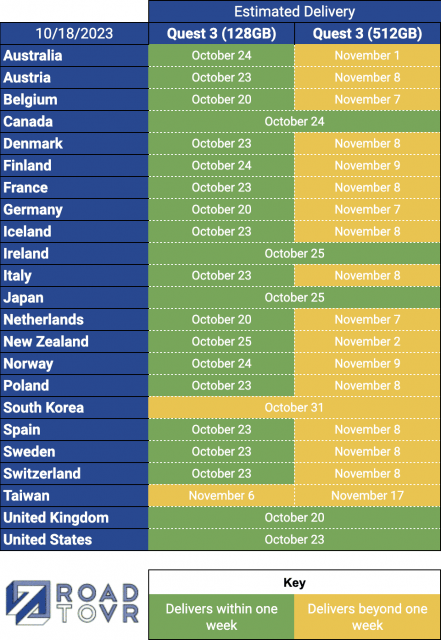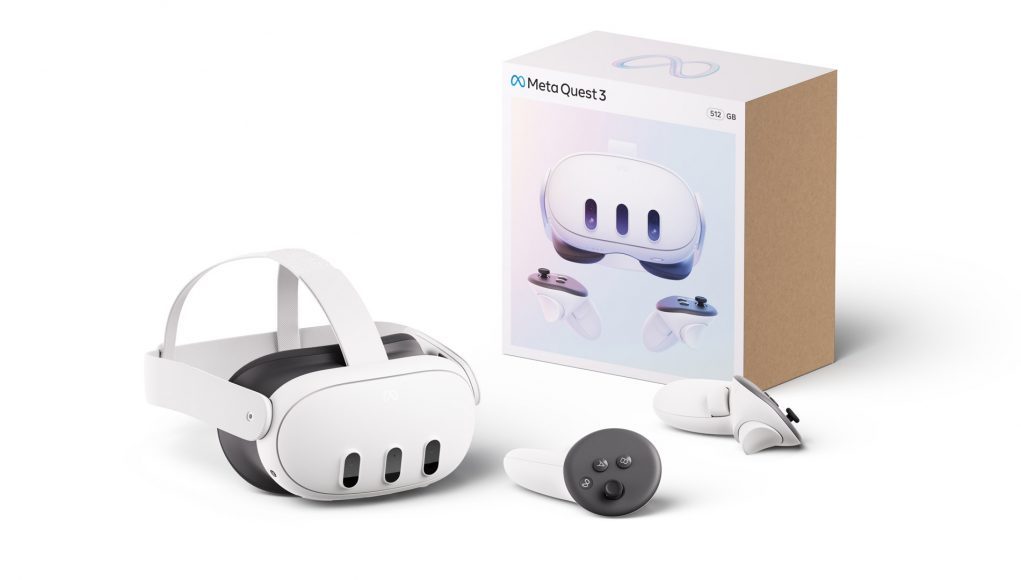Quest 3 just began shipping last week and headsets are rapidly arriving in the hands of eager buyers. While the 128GB model appears to be in strong supply, the more expensive 512GB model might be more popular than Meta expected.
We checked stock availability for direct purchases from Meta.com for Quest 3 (128GB) and Quest 3 (512GB) across all regions where the headsets are sold. The latest shows that most regions estimate delivery of the 128GB model within one week, but the 512GB model won’t deliver for a week or more in most regions:
 That seems surprising considering that Quest 3 is the company’s most expensive Quest headset yet, priced at $500 for the 128GB model and going up to $650 for the 512GB model.
That seems surprising considering that Quest 3 is the company’s most expensive Quest headset yet, priced at $500 for the 128GB model and going up to $650 for the 512GB model.
There’s a few possible explanations for the current stock situation:
- Meta underestimated demand for the 512GB model
- Meta anticipated the demand for the 512GB model and set aside more of the initial inventory for third-party retailers
- For some manufacturing reason, Meta couldn’t build up as much initial stock of the 512GB model, or can’t manufacture them as quickly
Of course, Quest 3 is also available in many other stores, like Amazon, Best Buy, and other regional retailers, each of which have different levels of stock.
We’ll continue to monitor the stock of both Quest 3 models to understand more about how they’re selling.







